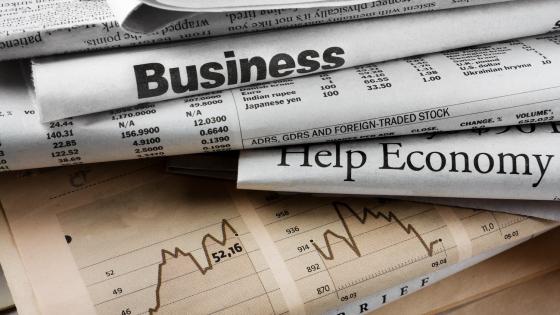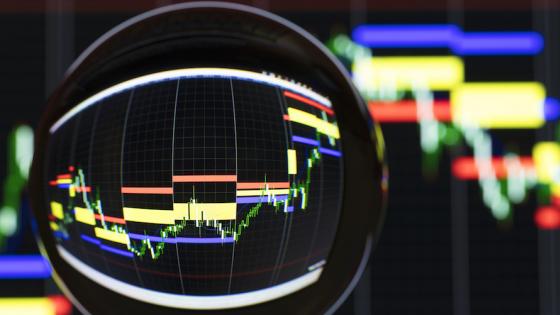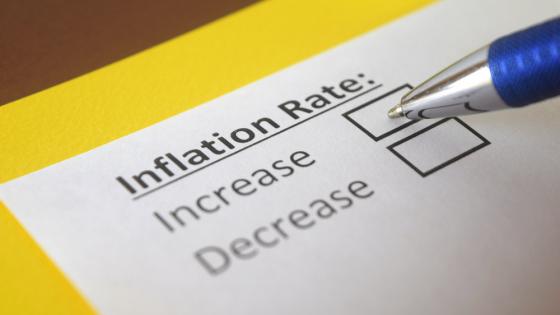Expectations take centre stage in macroeconomic theory but how expectations are formed is notoriously hard to understand. In the past, modelling efforts have typically been disciplined by the rational-expectations assumption. Recent new survey evidence is guiding efforts to develop alternative frameworks (e.g. Andre et al. 2021, Bordalo et al. 2022a, D’Acunto et al. 2022). This is particularly relevant now as record-high inflation gives rise to concerns that inflation expectations are becoming unanchored (Lane 2022). But efforts to better understand the process of expectation formation are often based on surveys of professional forecasters and households (Coibion et al. 2020, Coibion et al. 2021, Conrad et al. 2022). Less attention is paid to data on firm expectations, even though they are key to pricing decisions and macroeconomic performance (Bloom et al. 2018, Enders et al. 2022).
Micro versus macro news
In a new paper, we zoom in on the expectation-formation process of firms and study the response to news of firms’ expectations about their own performance (Born et al. 2022a). For this purpose, we rely on the ifo survey of German firms, which features responses from some 1,500 firms each month and covers more than 15 years of data. The survey is used to compile the ifo index, a widely watched indicator of the German business cycle. Earlier findings based on this survey also emerge robustly in other firm surveys (Born et al. 2022b). Still, we verify that our main results also hold for the Banca d’Italia’s ‘Survey on Inflation and Growth Expectations’ of Italian firms.
Our empirical framework builds on earlier work by Coibion and Gorodnichenko (2015) and Bordalo et al. (2020) and relates errors in firms’ forecasts about the change in their production over the following three months to current news. We approximate news by the revision of a firm’s production forecast for three months down the road. Such news may reflect both firm-specific developments and changes in the aggregate economy. This distinction takes centre stage in our analysis and we refer to these types of news as ‘micro news’ and ‘macro news’, respectively.
We compile micro news as the idiosyncratic component of firms’ forecast revisions in the current month. Macro news, in turn, is the surprise component of the ifo index, measured as the difference between the current release of the index and the Bloomberg consensus forecast for the index – both observable in real time. Hence, neither micro nor macro news should predict the forecast error under rational expectations.
Overreaction to micro news, underreaction to macro news
Our first result, echoing earlier findings for professional forecasters in the literature referenced above, is that news predicts firms’ forecast errors. Our second, entirely novel result is that they do so in systematically different ways. Macro news, or information about the overall economy, tends to lead to positive forecast errors, meaning that actual production ends up exceeding expectations. More concretely, if the current ifo index surprises positively, a firm’s production is likely to exceed its expectation over the following three months. In this sense, firm expectations do not fully account for macro news as they become available: on average, they underreact to macro news or respond too little – if benchmarked against the rational-expectations benchmark.
Micro news, instead, has a negative effect on the forecast error. That is, an upward revision of production expectations tends to be followed by a worse-than-expected output performance. Firm expectations respond too strongly to micro news: they overreact.
Figure 1 Distribution of estimated firm-level responses to news
Notes: Grey area represents insignificant estimates, light green area represents estimates significant at the 10% level, dark green area indicates significance at the 5% level.
This result emerges robustly across specifications and surveys. We obtain our main result for the ifo and Bank of Italy’s surveys while pooling observations across firms in each case.
In addition, we examine how individual firms respond to news, taking advantage of the large number of consecutive observations available for most firms in the ifo survey. We find that overreaction to micro news is a pervasive feature across firms. The firm-level estimates shown in the figure above are consistently negative and tightly distributed in a narrow range (left panel). There is no significant difference in estimates across firm characteristics, such as firm size or firm age.
The response to macro news is somewhat more dispersed across firms (right panel). Although for most firms we find underreaction, firms differ in how strongly they overreact to macro news. Larger firms, for instance, underreact more strongly. This result reflects a stronger impact of the macroeconomy on the production – and hence the forecast errors – of larger firms. Over- and underreaction are present over the entire sample and increase in magnitude during the financial crisis of 2008/2009.
Furthermore, we establish that the variation in the reaction to news across firms systematically correlates with firm-level outcomes. We find, in particular, that a stronger overreaction to micro news is associated with lower profits, and both – overreaction to micro news and underreaction to macro news – are associated with higher firm-level production volatility.
Theory and implication
We rationalise the patterns in the data as we develop a stylised model in which firms suffer from island illusion, meaning that they tend to underestimate the influence of overall economic conditions on their own performance. We think of island illusion as an instance of salience, consistent with the notion that firm-specific developments are salient stimuli to firms because they attract firms’ attention “bottom-up, automatically and involuntarily” (Bordalo et al. 2022b). As such they feature disproportionately in firms’ judgements. In our model, the extent of island illusion and hence the departure from rational expectations is governed by a single parameter that, in turn, is sufficient to predict over- and underreaction to micro and macro news, respectively.
A tentative implication of our analysis is that macroeconomic developments, including the recent inflation surge, are impacting firm expectations and, eventually, firm decisions more slowly than rational expectations would suggest. This gives policymakers time to act in times of turbulence but also limits their ability to steer the economy swiftly by managing expectations.
References
Andre, P, I Haaland, C Roth, and J Wohlfahrt (2021), “Inflation narratives”, VoxEU.org, 23 December.
Bloom, N, J David, and M Koga (2018), “Macroeconomic beliefs and firm performance”, VoxEU.org, 25 August.
Bordalo, P, N Gennaioli, and A Shleifer (2022a), “Overreaction and diagnostic expectations in macroeconomics”, Journal of Economic Perspectives 36(3): 223–44.
Bordalo, P, N Gennaioli, and A Shleifer (2022b), “Salience”, Annual Review of Economics 14: 521–44.
Bordalo, P, N Gennaioli, Y Ma, and A Shleifer (2020), “Overreaction in macroeconomic expectations”, American Economic Review 110(9): 2748–82.
Born, B, Z Enders, M Menkhoff, G J Müller, and K Niemann (2022a), “Firm expectations and news: Micro v macro”, CEPR Discussion Paper 17768.
Born, B, Z Enders, G J Müller, and K Niemann (2022b), “Firm expectations about production and prices: Facts, determinants, and effects”, in R Bachmann, G Topa, and W van der Klaauw (eds.), Handbook of Economic Expectations, Elsevier.
Coibion, O, and Y Gorodnichenko (2015), “Information rigidity and the expectations formation process: A simple framework and new facts”, American Economic Review 105(8): 2644–78.
Coibion, O, Y Gorodnichenko, E Knotek, and R Schoenle (2020), “Average inflation targeting and household expectations”, VoxEU.org, 30 September.
Coibion, O, Y Gorodnichenko, and M Weber (2021), “How inflation expectations affect households’ spending decisions”, VoxEU.org, 19 March.
Conrad, C, Z Enders, and A Glas (2022), “The role of information and experience for households’ inflation expectations”, European Economic Review 143: 104015.
D’Acunto, F, U Malmendier, and M Weber (2022), “Learning about inflation expectations from the data”, VoxEU.org, 7 May.
Enders, Z, F Hünnekes, and G Müller (2022), “Firm expectations and economic activity”, Journal of the European Economic Association 20(6): 2396–439.
Lane, P (2022), “Inflation diagnostics”, ECB blog, 25 November.








